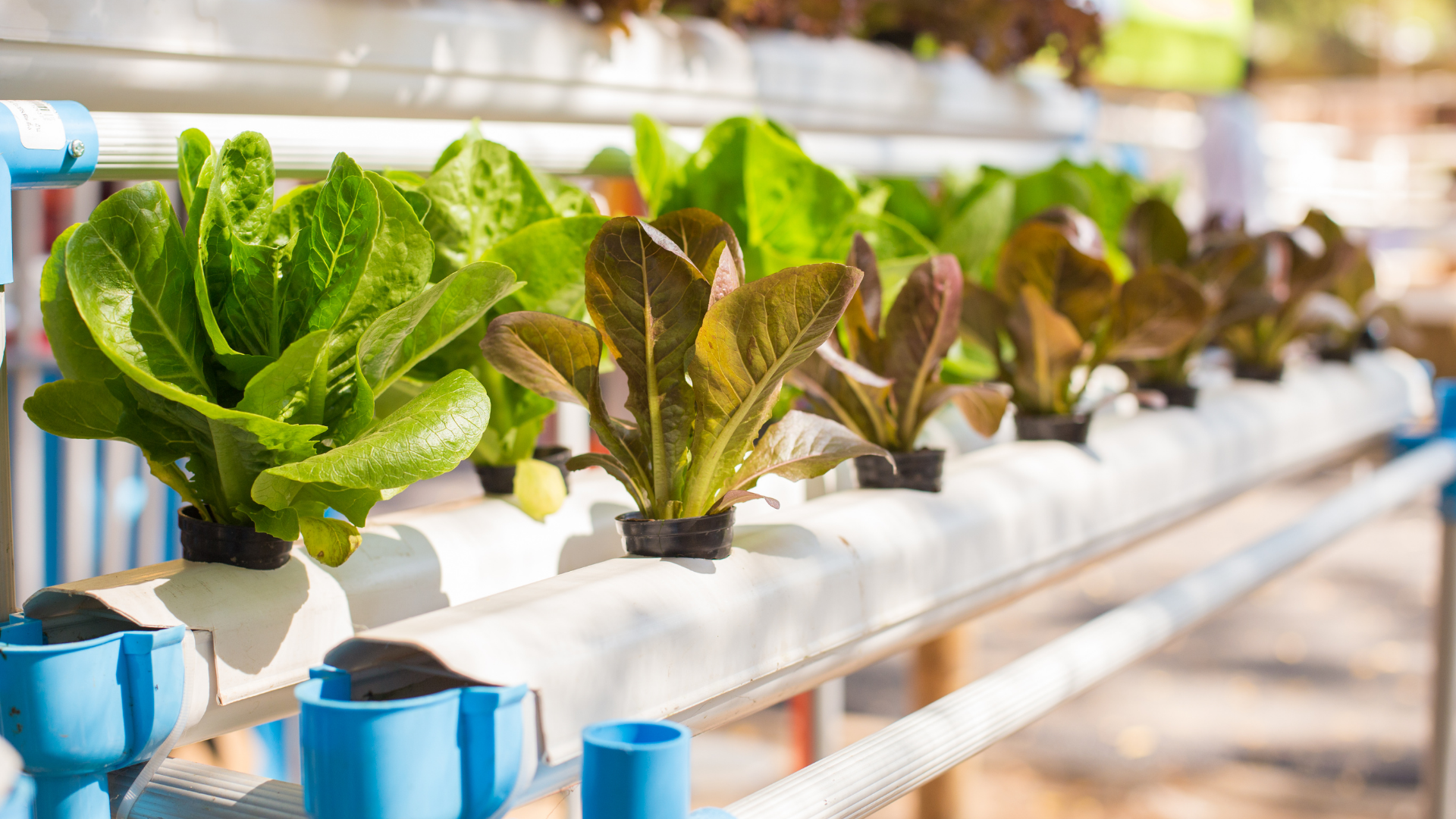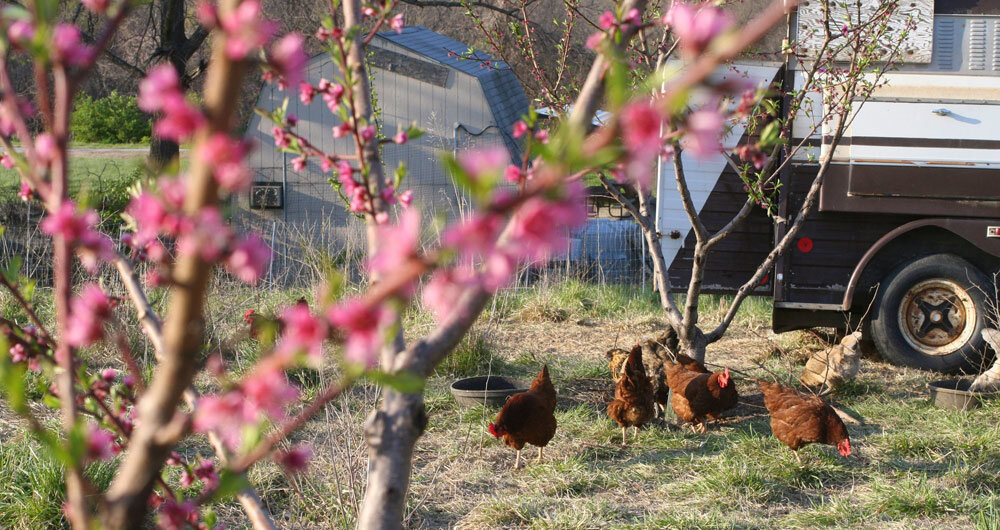Sep 21, 2021
7 Urban Farms Creating A More Circular Food System
.png)
Editor’s Note: The following list details some urban farms that use more sustainable practices to grow more with less and create more circular food production systems. This list is not exhaustive but rather meant to illustrate the variety of ways in which urban farms are creatively repurposing waste and utilizing available resources to feed the growing population.
We produce more than enough food on this planet to feed the 7.9 billion people currently living on it. But, according to the United Nations, more than 2.3 billion people, or 30% of the global population, lacked year-round access to adequate food in 2020.
Studies reveal that a third of food produced, or 1.6 billion tons, is lost or wasted annually. This is equivalent to $1.2 trillion, and is estimated to continue growing.
But, food waste isn’t just a financial loss. It’s also an environmental one:
-
In the US alone, the production of lost or wasted food generates the equivalent of 32.6 million cars’ worth of greenhouse gas emissions.
-
With the agricultural sector accounting for 70% of the world’s water usage, food waste represents a huge proportion of freshwater and groundwater that is wasted.
-
1.4 billion hectares of land, which is roughly one-third of the world’s total agricultural land area, is used to grow food that is wasted.
-
Millions of gallons of oil are also wasted every year to produce food that is not eaten.
-
The impacts on biodiversity and soil quality are also great concerns due to activities like monocropping and converting wildlands into agricultural areas.
Given these numerous environmental concerns, how do we create a more sustainable food system that reduces waste and moves us away from our overreliance on extracting limited natural resources?
One popular belief is that a more efficient, more sustainable, and less wasteful food system must be more circular in nature. Here are seven urban farms that are helping to accelerate circularity in the global food system:

Image sourced from Smallhold
Smallhold: Using Substrate Made From Recycled Waste
Smallhold is repurposing waste from the timber, agricultural, and restaurant industries - like coffee grounds and sawdust - to create their own substrate blocks for the mushroom to grow.
The team has also installed glowing mushroom-producing cabinets citywide in restaurants and supermarkets to create atmospheric spectacles lit from within with neon-blue grow lights and allow consumers to see the food they’re consuming being grown. Additionally, Smallhold uses minimal packaging on their products - simple cardboard boxes with open windows.

Image sourced from Floating Farm Rotterdam
Floating Farm NL: Using Organic Waste Streams For Cow Feed
Peter Van Wingerden, CEO of the Floating Farm Rotterdam, shares that the “cows are the most natural biomass upgrade animals we have: they turn controlled city-bio-waste into healthy protein for human beings.” With the support of their partners, this floating farm for cows is able to obtain 80% of all the feed from residual waste-streams in the city - from beer-breweries, golf courses, bakeries, and city retailers.
Additionally, this floating farm processes the manure from their cows into organic fertilizer for plants and parks in the city, and “generates all of its own electricity from floating solar panels.”
BIGH Farm: Establishing Technical Synergies In Fish Farming

Image sourced from BIGH Farm
BIGH Farm combines fish farming with food production. As “fish produce high levels of nitrates and phosphorus,” the BIGH farm’s “aquaponics system takes the would-be waste output of highly nutrient water and delivers it directly to plants, cleaning it and reducing this dependence on added fertilizer.”
Furthermore, “the water is maintained in the system, continuously circulates and is cleaned mechanically and biologically,” and “all fish meal and oils used in the feed come entirely from fishery by-products, alessening pressure on the fishing industry.”
“This integration of a greenhouse, aquaponics systems, and green roof on the Abattoir of Anderlecht moves Brussels towards a more circular economy. ”

Rendering sourced from YASAI
YASAI: Recycling Nutrients For Plant Growth
In reactivating the unused La Sarraz quarry space in Switzerland, this former Agritecture client recycled concrete to minimize grey energy, and utilized the existing limestone quarry setting to serve as a natural coolant for the building.
YASAI recycles nutrients from wastewater to create what they call “the magic sauce,” captures rainwater on the roof to supply irrigation systems, uses geothermal heat pumps to enable internal cooling with activated ceilings, reuses bio-waste to generate electricity, and captures CO2 by compressors to promote plant growth. With these, there is a direct CO2 compensation of 3,150 tons per year.
The Plant Chicago: Piloting The First Local Circular Economy Network For Small Businesses

Image sourced from Plant Chicago
Located in a former firehouse, the nonprofit Plant Chicago hosts shared-use indoor growing spaces for plants and fungi, alongside maker spaces to bring “Chicago-area small businesses together to cultivate local circular economies.” These tenants use one another’s byproducts - over 90 percent is reused, repurposed, composted or recycled. One of their innovations is the “algae bioreactor that runs on wastewater from the shrimp farm and the old commercial refrigerator repurposed into a mushroom fruiting chamber.” Of the 40,000 pounds of material yielded per month, 40 percent is finished products and 60 percent is byproducts.
Agritecture’s Director of Digital Strategy, Ricky Stephens, shares that "the Plant has become an inspiration of what food system circularity can look like on a hyper-local scale. After visiting in 2016, the concept really stuck with me, and I've always wanted to create a variation of it in NYC (I even won a design contest for a similar idea in 2018). The challenge with a model like this is that you need time for experimentation and you need collaboration from all parties. My take is that the only way to do this is to build it into the business models of food-producing startups from the get-go."
Urbavore Farm: Soil-Based Regenerative Farming

Image sourced from Urbavore Farm
Located in Kansas City, family farm Urbavore Farm has created a biodiverse ecosystem with the belief that “healthy crops depend on a diverse landscape of abundant plants, animals, insects, fungi and bacteria.” This complex symbiosis and “bio-intense farming system” allows Urbavore Farm to combine animal power with companion planting and composting.
The water used for vegetable production and for livestock “is recycled from the wastewater of our house.” With no irrigation, the family relies on their "no-till agricultural practices [to] store water in the soil, even through drought” and activates their soil with “worms, bacteria, and fungi working in harmony to produce the ideal conditions for plant roots.”
Upward Farms: Farming Animals, Microbes, And Plants

Image sourced from Upward Farms
Similarly to BIGH Farm, Upward Farms has transcended the boundaries of traditional aquaponics by revolutionizing a technique to both raise fish and plants in their own ideal environments within an intact ecosystem. By using fish to fertilize crops, this team is able to increase yields and have more control in disease prevention, and unprecedented food safety.
Through these means, Upward Farms is able to sustainably farm mercury-free, antibiotic-free, and hormone-free striped bass, alongside their leafy greens that absorb nutrients from the fish, filter water as they grow, and reduce water use by 95%.

